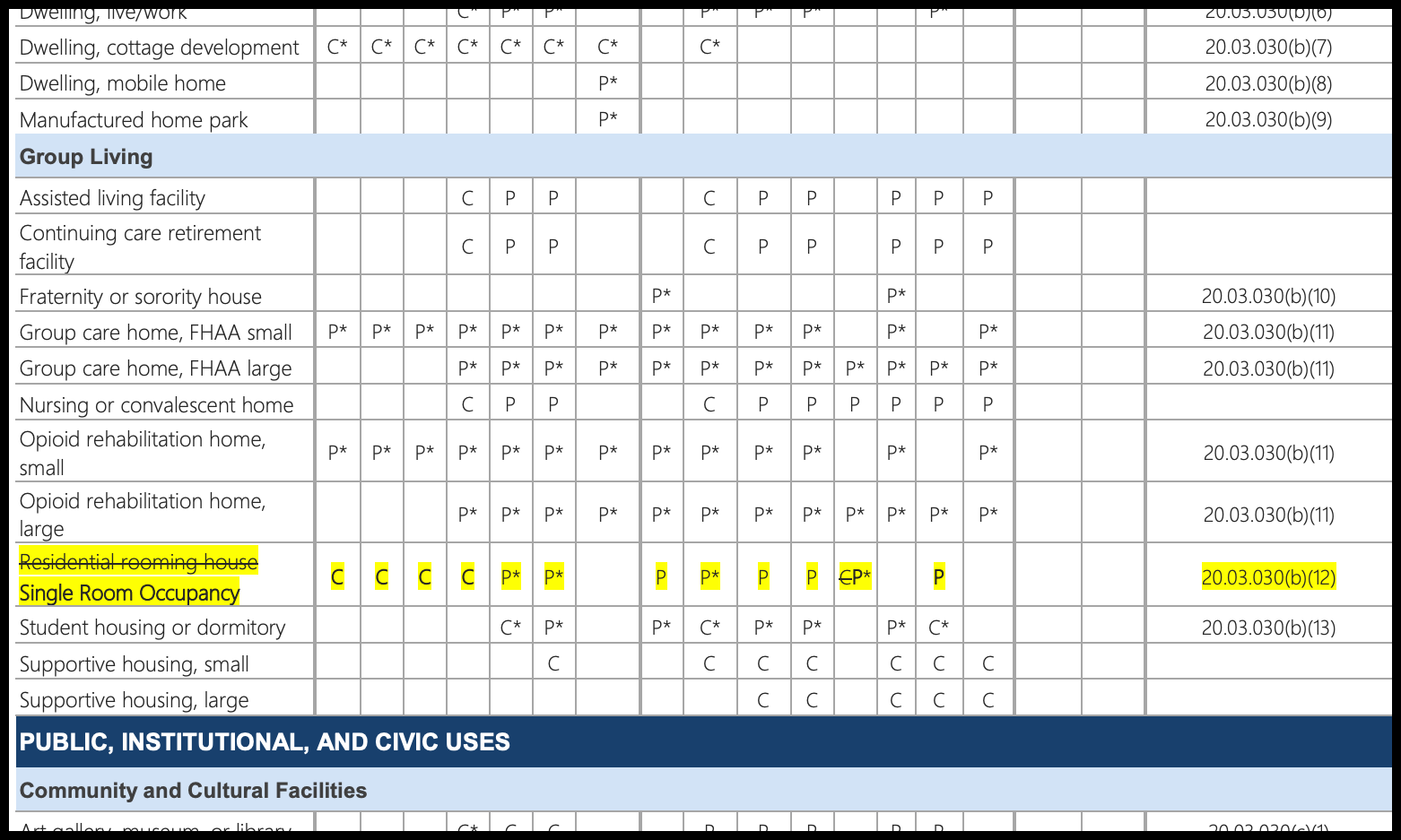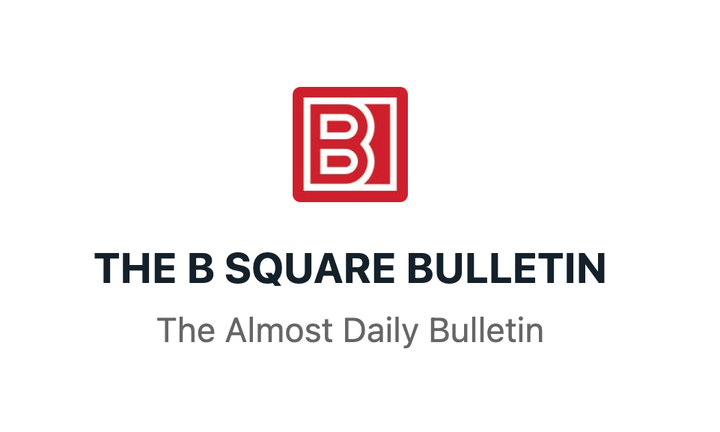Bloomington zoning: Revisions to use table to be mulled in July; public process on changes to housing to come later
There are now two separate efforts to revise the Bloomington's zoning code. One effort is focused on the Allowed Use Table, to be considered in mid-July. The second effort, focused on housing, will see a public process unfold, leading to consideration in January 2026.


Two new separate efforts to revise the city's zoning code have led to some recent confusion about what Bloomington's planning and transportation staff and plan commission are actually working on.
One effort could be considered to be a collection of thematically unrelated revisions—except that they all involve the Allowed Use Table in the city's UDO (Unified Development Ordinance). A May 30 letter to all property owners served as the legal notice of those changes. Those ordinances are teed up for consideration by the plan commission on July 14. The city's website features a page dedicated to the Allowed Use Table updates. After consideration by the plan commission, they'll be put to a vote by the city council.
A different effort is to undertake amendments to the UDO that are coordinated to target one issue, which is increasing housing attainability. At the city council's June 4 meeting, planning and transportation director David Hittle gave a briefing on the housing attainability project. A public engagement process is planned, which is supposed to finish before the end of the year, and land on the plan commission's docket in January of 2026.
The two new efforts to revise the UDO come just as a round of routine "technical amendments" to the UDO wrapped up. The technical amendments were mostly scrivener's errors, incorrectly numbered footnotes, or incorrectly cited tables. On May 21, the city council approved the four ordinances that encompassed the technical corrections.
For the last few years, planning staff have been collecting the technical corrections as they go, compiling them as a batch of ordinances to be considered by the plan commission and the city council once a year.
In a similar way, a batch of Allowed Use Table amendments have also been collected by the planning staff. Amendments to the use table are generally more significant than the changes that are made in the batches of technical amendments.
Here's a breakdown of the Allowed Use Table revisions, followed by an outline of the separate housing attainability project.
Allowed Use Table revisions
At the plan commission's June 9 meeting, assistant planning director Jackie Scanlan briefed commissioners on the items they will see at their July 14 meeting, which were legally noticed in the May 30 letter.
Single Room Occupancy (SRO)
What's changing: Of the proposed changes to the Allowed Use Table, this is the one that affects housing. It would change "residential rooming house" to "single room occupancy" as a use that is defined and regulated. A key change is the elimination of the requirement that the owner of the property has to occupy the rooming house as their primary residence. The SRO is also expanded as a conditional use ("C" in the table) to four additional residential zoning districts (R1, R2, R3, and R4)
Why: This change was prompted by city council Resolution 2024-25, which called for revisions to this housing type.
Urban Agriculture (Commercial)
What's changing: A new use would be defined, called "urban agriculture, commercial" which would complement the existing use "urban agriculture, noncommercial." The new commercial use would be allowed in all the mixed use areas, but only as a conditional accessory use in residential areas.
Why: The change was prompted by an enforcement case involving a local property owner who was using their land for urban agriculture. The city has been in discussion with that property owner and their representatives.
Self-Service Storage Restrictions
What's changing: Limits on self-storage facilities will restrict them to major arterial road corridors.
Why: To keep such facilities out of lower-scale or smaller districts. The goal is to reserve land in those areas for more pedestrian-friendly, neighborhood-appropriate uses and push large-scale storage to higher-traffic, higher-intensity areas.
Vehicle fueling and washing
What's changing: Limits are imposed on vehicle fuel stations and wash stations restricting them to higher-intensity districts
Why: To avoid the siting of these auto-oriented uses in smaller districts where they may conflict with walkability, housing, or other low-intensity uses.
Fraternity and sorority asterisk removal
What's changing: The asterisk in the use table for fraternity and sorority houses is getting removed.
Why: The asterisk originally indicated that use-specific standards applied. But since those use-specific standards were removed in previous updates (following litigation), the asterisk is now meaningless and misleading.
Artist Studio, Workshop, and Office in MS
What's changing: Adds artist studio, workshop, and office as allowable uses in the Mixed-Use Student Housing (MS) district.
Why: There have been vacancies in ground-floor commercial spaces in student housing developments, and these uses are currently not permitted there. Real estate professionals have requested the change, which would help activate those spaces and support more varied commercial activity.
Vehicle Fleet Operations
What's changing: These are updates to the vehicle fleet operations use, including adding an asterisk and cross-reference to indicate that use-specific standards now apply. Previously approved changes for this category (including autonomous vehicles) are being reflected in the use table for clarity.
Why: The plan commission and city council already approved the standards, but this makes sure the main use table now references them properly.
Tattoo Parlor Consolidation
What's changing: Tattoo and piercing parlors will no longer be listed as a separate use.
Why: They'll be folded into personal services or general commercial—more consistent with how similar services are treated. This reduces unnecessary specificity in the use table.
Housing attainability
At the city council's June 4 meeting, Bloomington's planning and transportation director David Hittle unveiled a housing attainability initiative that would eventually make amendments to the city's UDO (Unified Development Ordinance) that are "surgically focused" just on residential housing.
Hittle described several factors that dictate housing attainability, which include land availability, workforce conditions, and lending markets. Municipal regulations are just one of the factors affecting attainability, but it's the one that the local government can control, he said.
The proposed UDO amendments will include consideration of lot dimensions, cottage development regulations, missing middle housing concepts, accessory dwelling units, duplexes, triplexes, four-plexes, parking requirements, and short-term rental (STR) regulations.
The idea of implementing some kind of STR regulations was floated in early fall of 2024, and seemed at the time like it could result in a legislative proposal before the end of the year, but did not move forward.
Hittle said at the council's June 4 meeting that additional potential long-term strategies could include building code modifications, and creating pre-approved construction plans, possibly piloting such plans at the Hopewell redevelopment site.
Hittle stressed the idea that the idea for the housing attainability project is to collect feedback from the public. "We're going into these sessions with more of a listening approach," Hittle said. He sketched out a public engagement strategy targeting neighborhood associations, development professionals, the Greater Bloomington Chamber of Commerce, Indiana University, the school district, and major local employers. As Hittle put it, "A lot of the good ideas that happen in the world of planning come from outside the world of planning."
Hittle said the engagement plan includes in-person and virtual meetings, targeted roundtables, pop-up information stations, and regular office hours.
Hittle said the project would compare Bloomington with places that have similar university-city dynamics, focusing on locations like Manhattan, Kansas; Pullman, Washington; and Corvallis, Oregon. Those are places that like Bloomington include "a very small city nestled against a very large university," Hittle said.
Hittle told the council at their June 4 meeting that he hopes that the public process can be wrapped up by the end of the year and that a proposal can be presented to the plan commission in January 2026.
In his remarks, Hittle mentioned the two failed resolutions that were proposed earlier in the spring by Matt Flaherty and Kate Rosenbarger. Their resolutions were meant to direct the plan commission to propose several different zoning changes, some of which are included in the administration's housing attainability initiative. Hittle said that there is "clear value" in the ideas that those resolutions included. Hittle said that in his conversations with city councilmembers, the mayor, and his staff there's consensus that there's merit in the ideas contained in those resolutions.




Comments ()